
Zdeněk Wirth: Jan Kotěra
Presented on January 6, 1926, at the Municipal House in Prague, during the opening of the collective exhibition of Jan Kotěra, organized by S.V.U. Mánes.
Ladies and gentlemen,
I wish that today, as S. V. U. Mánes, full of noble pride, opens a posthumous exhibition of the life’s work of one of its greatest figures, we could at least for a moment find ourselves in Italy of the 16th century and that architecture could become not only a utility but a public cultural matter, an art felt and understood just like painting and sculpture, so that we regard the street and square backdrops and spaces, the outlines of buildings, the surfaces of their facades, and their grand halls as a theater of beauty and an object of admiration and respect just like the contents of galleries and pinakotheks. I will not discuss again today at the introduction to the tour of the posthumous exhibition the fates and external circumstances of Kotěra’s life and artistic career, since that has been beautifully and often spoken about on the occasion of his fiftieth birthday and at his fresh grave recently. I only wish for you to appreciate the work of the architect itself, not — as it is often his lot — in its adornment and superficial appeal, but in its purest formal beauty of space and material, so that this exhibition tells you about the great artist and puts you in awe of the richness and versatility of his genius as well as the dexterity of the enchanting draftsman, whose hand rests here in cast among family memorabilia.
Kotěra was the first modern Czech architect, and he maintained this primacy until his death, not always because of the greatness of the tasks assigned to him by fate, but due to the strength and purity of artistic expression. He managed to bring the spring he brought to Prague at the end of the 1890s into the Czech artistic society, worthy of being long maintained in freshness, and Mádl’s words, with which he welcomed him in Volné Směry at the threshold of the Art and Industrial School, at the threshold of the studio, and at the threshold of the “Mánes” association room, retained their validity for a long time, because Kotěra was able, as one of the first, to create merely by his existence and example what had not been in Bohemia before — an artistic environment. He did not create it in the tradition of the artistic bohemia of France or — what was even closer to the tradition of Prague at that time — South German, but he brought a new spirit of emerging European modernity, which — just as the Renaissance once liberated the artist from medieval guild constraints — placed the architect among the builders of culture and returned to him a high leading position in the artistic creation of the era.
A handsome man, of refined manners, witty words, conscious of his worth, and therefore unconsciously a bit condescending in tone.
A person of great passions, but not frivolous, rather modernly methodical and orderly, hardworking — thus Kotěra came to Prague, and it is no wonder that in the society of that time he was regarded as once Professor Masaryk was as a cultural decree of Vienna and that in a certain sense he always remained isolated. His position was different from today’s young generation, which strives for development within the framework of contemporary art and not for a complete change of system and methods of artistic thought and formation, which evoked mocking titles from the older generation like "Malerarchitekt," because he already differed in his way of drawing from the tectonic composition of profiles and with a single stroke of a pen or pencil evoked line, outline, mass.
A quarter of a century has passed since then, and the result of the artist's work, presented here, vindicates those who saw in Kotěra a fulfilled fate of Czech architecture and who gathered around him. He became the axis of development, matured into a great figure of leadership, showing traits of genius in expressing ideas, in the multiplicity of his work, in the richness of formal ideas, and in the versatility of his labor.
We see into his mental workshop, we follow the architectural sketches, often inspired by music, the birth of monumental ideas, we are amazed by the sovereignty with which he previously sketched for his collaborators — sculptors — the finished outline of matter, we find that what is for others an exclusive life domain, Kotěra cultivates as allotria to unwind after the daily task, that he is as skillful an watercolorist as he is a graphic artist and caricature drawer.
The versatility of the architect's work occupies not only the most monumental projects like the university, the royal palace, the museum, and urban regulations, but also encompasses the whole domain of utility architecture, mainly villa and family houses, interiors and minor funerary structures, as well as exhibition exposés and artistic industries.
“Mánes” gladly performed an act of gratitude to one of its main leaders and showcased his life work with the largest number of exhibited works. There is much respect in it and much pain over a great talent prematurely extinguished, but there is also much satisfaction for the past. However, what I would value most and why I would wish that we could at least for a moment find ourselves in Italy of the 16th century: there is a great legacy of a true artist, without banality and compromises, a great comfort for his contemporaries and a great encouragement for his successors.
I wish that today, as S. V. U. Mánes, full of noble pride, opens a posthumous exhibition of the life’s work of one of its greatest figures, we could at least for a moment find ourselves in Italy of the 16th century and that architecture could become not only a utility but a public cultural matter, an art felt and understood just like painting and sculpture, so that we regard the street and square backdrops and spaces, the outlines of buildings, the surfaces of their facades, and their grand halls as a theater of beauty and an object of admiration and respect just like the contents of galleries and pinakotheks. I will not discuss again today at the introduction to the tour of the posthumous exhibition the fates and external circumstances of Kotěra’s life and artistic career, since that has been beautifully and often spoken about on the occasion of his fiftieth birthday and at his fresh grave recently. I only wish for you to appreciate the work of the architect itself, not — as it is often his lot — in its adornment and superficial appeal, but in its purest formal beauty of space and material, so that this exhibition tells you about the great artist and puts you in awe of the richness and versatility of his genius as well as the dexterity of the enchanting draftsman, whose hand rests here in cast among family memorabilia.
Kotěra was the first modern Czech architect, and he maintained this primacy until his death, not always because of the greatness of the tasks assigned to him by fate, but due to the strength and purity of artistic expression. He managed to bring the spring he brought to Prague at the end of the 1890s into the Czech artistic society, worthy of being long maintained in freshness, and Mádl’s words, with which he welcomed him in Volné Směry at the threshold of the Art and Industrial School, at the threshold of the studio, and at the threshold of the “Mánes” association room, retained their validity for a long time, because Kotěra was able, as one of the first, to create merely by his existence and example what had not been in Bohemia before — an artistic environment. He did not create it in the tradition of the artistic bohemia of France or — what was even closer to the tradition of Prague at that time — South German, but he brought a new spirit of emerging European modernity, which — just as the Renaissance once liberated the artist from medieval guild constraints — placed the architect among the builders of culture and returned to him a high leading position in the artistic creation of the era.
A handsome man, of refined manners, witty words, conscious of his worth, and therefore unconsciously a bit condescending in tone.
A person of great passions, but not frivolous, rather modernly methodical and orderly, hardworking — thus Kotěra came to Prague, and it is no wonder that in the society of that time he was regarded as once Professor Masaryk was as a cultural decree of Vienna and that in a certain sense he always remained isolated. His position was different from today’s young generation, which strives for development within the framework of contemporary art and not for a complete change of system and methods of artistic thought and formation, which evoked mocking titles from the older generation like "Malerarchitekt," because he already differed in his way of drawing from the tectonic composition of profiles and with a single stroke of a pen or pencil evoked line, outline, mass.
A quarter of a century has passed since then, and the result of the artist's work, presented here, vindicates those who saw in Kotěra a fulfilled fate of Czech architecture and who gathered around him. He became the axis of development, matured into a great figure of leadership, showing traits of genius in expressing ideas, in the multiplicity of his work, in the richness of formal ideas, and in the versatility of his labor.
We see into his mental workshop, we follow the architectural sketches, often inspired by music, the birth of monumental ideas, we are amazed by the sovereignty with which he previously sketched for his collaborators — sculptors — the finished outline of matter, we find that what is for others an exclusive life domain, Kotěra cultivates as allotria to unwind after the daily task, that he is as skillful an watercolorist as he is a graphic artist and caricature drawer.
The versatility of the architect's work occupies not only the most monumental projects like the university, the royal palace, the museum, and urban regulations, but also encompasses the whole domain of utility architecture, mainly villa and family houses, interiors and minor funerary structures, as well as exhibition exposés and artistic industries.
“Mánes” gladly performed an act of gratitude to one of its main leaders and showcased his life work with the largest number of exhibited works. There is much respect in it and much pain over a great talent prematurely extinguished, but there is also much satisfaction for the past. However, what I would value most and why I would wish that we could at least for a moment find ourselves in Italy of the 16th century: there is a great legacy of a true artist, without banality and compromises, a great comfort for his contemporaries and a great encouragement for his successors.
The English translation is powered by AI tool. Switch to Czech to view the original text source.
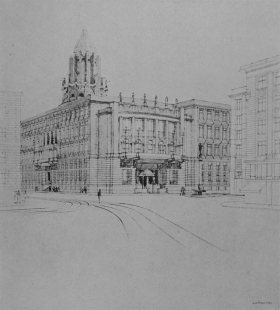

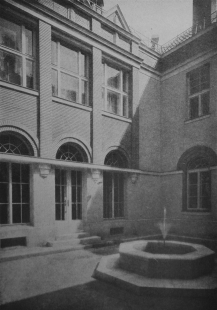
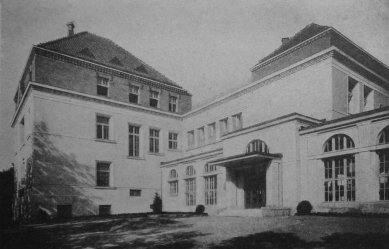

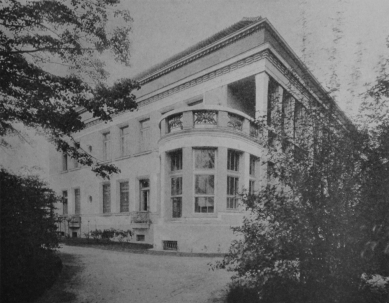
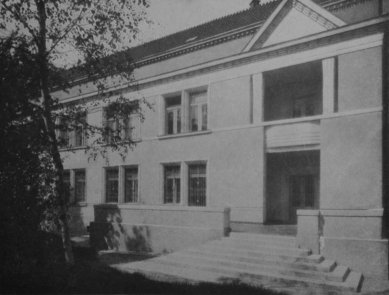
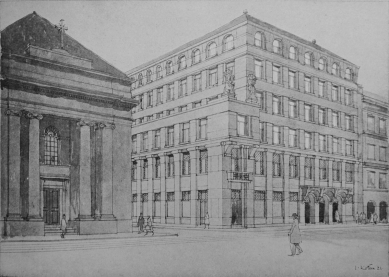
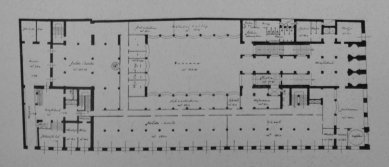
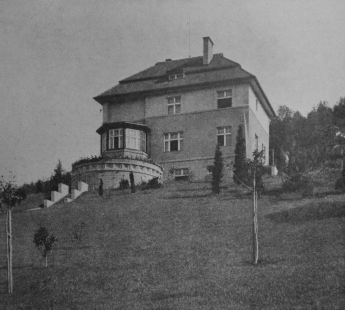
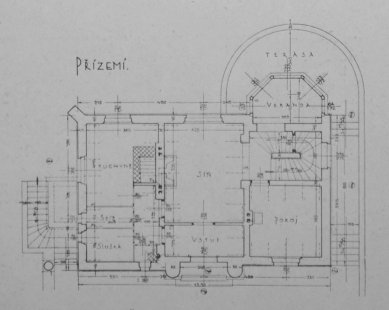


0 comments
add comment










